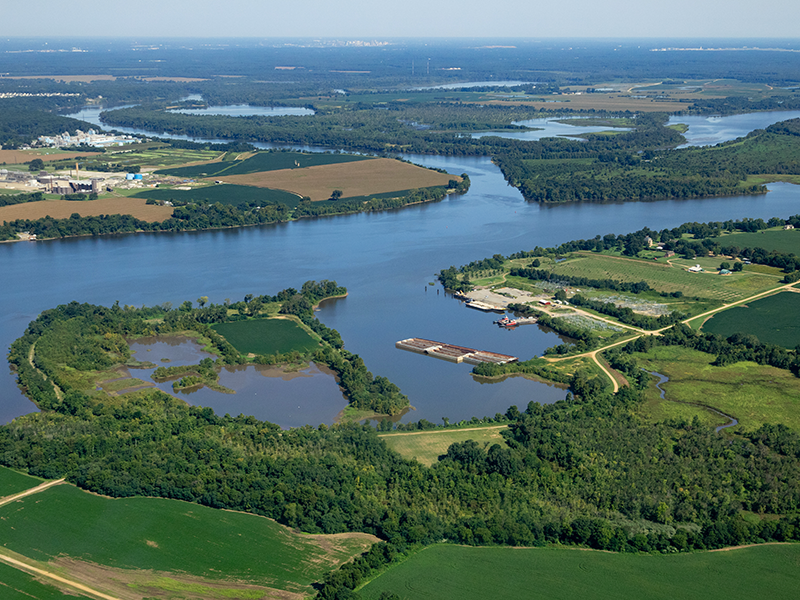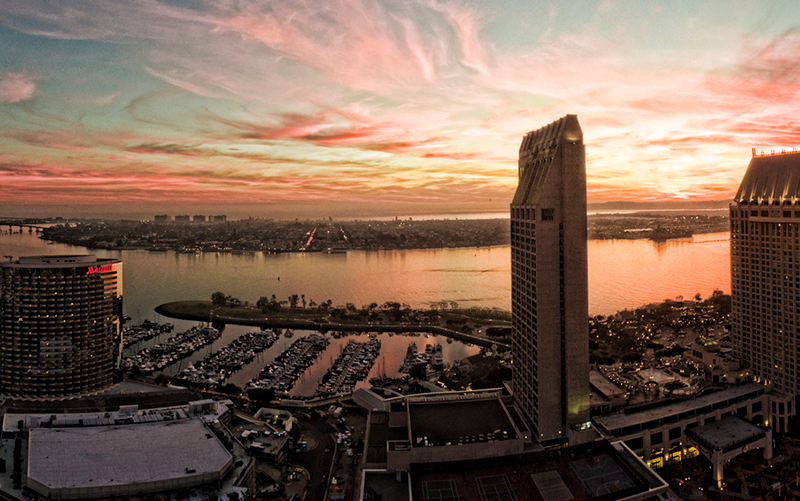Communities around the country are using rebates and incentives to engage residents in water quality efforts. These programs can foster community ownership in green infrastructure projects, increase property values, and provide myriad benefits to water quality, wildlife habitat, and community resilience. For example, subsidies can encourage homeowners to install rain barrels that capture excess runoff and help to reduce erosion. In commercial buildings, green roof programs provide similar benefits but also help to reduce the urban heat island effect, provide habitat, and improve aesthetic views that help to keep property values strong.
Rebate and incentive programs address a major hurdle to stormwater management. Whereas new construction or redevelopment must meet stormwater regulations, municipalities are often unable to require retrofits on existing properties. Therefore, rebate and incentive programs are an important avenue to encourage voluntary projects that reduce runoff and help to protect water quality. Programs from the District of Columbia and County of San Diego provide helpful lessons for developing these programs to achieve environmental and community goals.
District of Columbia
The Nation’s Capital has several rebate and incentive programs to help reduce stormwater runoff into local waterways and the Chesapeake Bay. RiverSmart programs provide financial incentives and assistance to install green infrastructure such as rain gardens, green roofs, and permeable pavement systems. Properties that voluntarily install green infrastructure can also generate and sell Stormwater Retention Credits (SRCs) in a private market to satisfy post-construction requirements.
In addition, any projects installed through these programs are eligible for RiverSmart Rewards, which discounts the District’s Stormwater Fee by up to 55% depending on retention achieved. The program also provides a maximum 4% discount on the DC Water Clean Rivers Impervious Area Charge, which helps to fund efforts to reduce combined sewer overflows.
My Experience with RiverSmart Homes
As a recent first-time homeowner, I am a big proponent of rebate and incentive programs. Over the past year my wife and I have been participating in the RiverSmart Homes program and found ourselves surprised by the easy and engaging process.
After signing up for the program online, we were soon visited by a staff member from the District of Columbia’s Department of Energy & Environment. The auditor walked our property, checking for land cover, slope, existing tree cover, and overhead wires and other obstacles that could affect our eligibility for projects. She also took a soil sample to determine whether rain gardens installed on our property would require underdrains to support timely retention.
We received an audit report that listed our eligibility for a rain barrel, two shade trees, native plant landscaping, a rain garden, and impervious surface removal. Over the following months various contractors visited us to help with site design. We received options from local organizations for our rain barrel and trees, and worked with a landscape architect to design landscaping using native plants in our front yard and a rain garden of wetland species in our backyard. The contractors scheduled and conducted our installations, contacting public agencies to assess any utility lines, rerouting downspouts to provide inflow to the rain barrel and rain garden and accommodate overflow, and siting the projects to accommodate our property’s slope. We also receive regular emails that notify us when to water our trees.
What did this landscaping cost us after the District Government’s contribution? Our grand total for design, capital, and installation costs for two trees, a rain barrel, rain garden, and native landscaping came to $325.00. Through RiverSmart Rewards, we will also qualify for an annual discount on our water bill of approximately $30.00 and our home value might increase from new landscaping. Most importantly, we are contributing to restoring the Anacostia River, which was once regarded as one of the most polluted rivers in the country but is undergoing a revitalization. It is difficult to put a value on the benefit of clean water to our community.
County of San Diego
Similarly, the County of San Diego has recognized the potential to engage property owners to address stormwater management challenge, and are planning to expand their existing stormwater rebate and incentive programs and develop new ones. Residents are currently eligible for up to three programs depending on their location and water service provider. These include rebates or subsidies for rainwater harvesting; rebates to promote water conservation such as weather-based irrigation controller systems, pressure reducing valves, and graywater systems; and free residential and commercial water surveys and training sessions on appropriate, regional landscaping.
The County’s stormwater permit requires covered jurisdictions to identify and implement strategies to improve water quality, identified in Water Quality Improvement Plans (WQIPs). Rebate programs or other types of incentives that encourage public-private partnerships are one set of strategies that can be included to help reduce pollutant loading to affected water bodies.
While the programs are voluntary for individual homeowners, regulators assume that participation will help to treat a certain amount of water and support the achievement of water quality goals.
Success factors of rebate and incentive programs
By comparing programs in these two municipalities, and from participating in a program myself, I recognize factors that help to engage more property owners in efforts to voluntarily manage stormwater. Municipalities that are considering developing rebate and incentive programs can incorporate these factors into their program design to accelerate progress toward achieving water quality goals.
- Optimal program design integrates multiple rebates and incentives – Though our projects were well worth their $325.00 price tag, the added discounts from the Rewards program on our water bill will help us to recoup that payment in approximately 11 years. The potential for low or no-cost projects provides a big incentive to enroll property owners in rebate and incentive programs and allows for more equitable participation across income groups.
- Municipalities should track project benefits even if their programs are not required – In DC, projects funded by RiverSmart programs clearly keep runoff from entering the combined sewer and reduce pollutant runoff in the separate sewer system. If the County of San Diego develops a county-wide program, projects will help realize water quality benefits even if co-permittees do not require rebate and incentive programs in their WQIPs. Municipalities should track and report on the benefits of rebate and incentive projects to demonstrate progress toward achieving permit requirements and progress toward restoring waterways.
- Effective metrics support outcomes reporting and participant comprehension – There are many ways to track the effectiveness of green infrastructure projects. When those metrics are aligned with regulatory requirements (e.g., gallons retained, area treated, pounds of pollutant reduced), it is easy to demonstrate progress toward meeting permit requirements. This also gives property owners a sense of ownership and pride from their role helping to clean local rivers and water ways.
- Contractor access and services are big motivators for program participation – The opportunity to work with a professional landscape architect to design our property, and the added benefit of contractors evaluating our property and arranging for utility assessments, made participation much easier and more enjoyable. Contractors are a valuable salesforce that has a profit motive to help landowners make environmental and aesthetic improvements.
- Program participation is as much about homeowner education as project installation – By working with local organizations, my wife and I learned a lot about our local watershed. In turn, our neighbors have become more familiar with the programs and their impacts on our waterways and environment.



